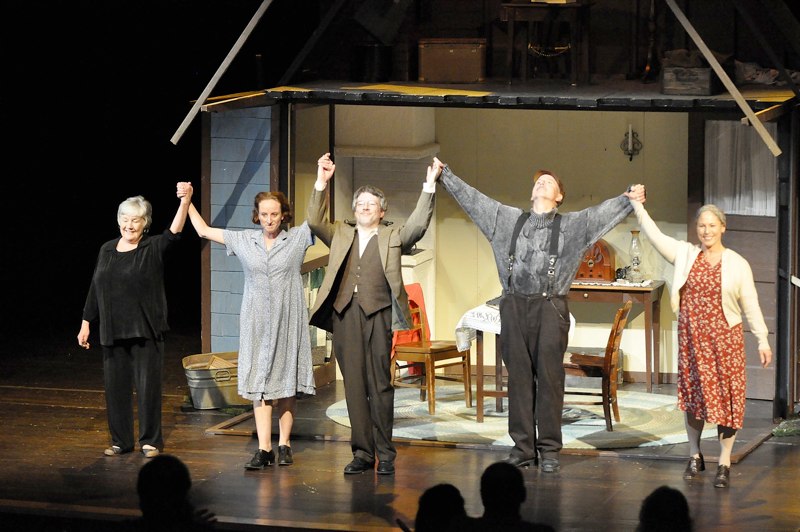
In this article I will deal with a very neglected area of dramatic technique: the writer’s voice. This may not seem to be an area of ‘technique’ at all, but the truth is that in the long run it’s one of the few things that really matter.
A chance remark overheard some years ago in a theatre foyer (that haven of generous opinions and sympathetic gossip) got me thinking. “She’s got no voice” said a man to his drinking partner. Listening in as discreetly as possible, I soon realised that this was not a medical condition he was describing, but a dramatic one.
What does it mean to ‘have no voice’? Thinking about it over the years, I’ve come to the view that a dramatic voice is the result of FOUR things: an outlook, an aesthetic, a linguistic technique and a personal response to form.
- An outlook on the world. It is impossible to express a voice if, first, you have no outlook on the world, its ways, its mores, vices, mindsets and behaviour. To have an outlook requires a thinking and feeling response to life and the world. It requires you to develop a view, a personal response to what you see, hear and feel around you. It may be highly personal. (In distinction to some forms, eg novels, I’m amazed at the lack of highly personal material that playwrights seem to take on, as so many works are lacking fire and individuality.) It may also be passionate, filled with rage, vehemence and anger. It may be comic, grotesque, provocative. No matter how you see the world, it has to be yours, and only yours. By this, I don’t mean that the way you see things must be so eccentrically individual that it ends up having no relationship to reality. Rather, your view of things has to be something that you feel deep down in your guts. Your view doesn’t have to be ‘right’. It has to be passionately felt and experienced.
- An aesthetic. Sometimes a writer has no idea how s/he sees the world, but keeps finding him/herself drawn to particular themes, stories and concepts. For example, a writer might be fascinated by the concept of ‘revenge’, its psychology, its emotional mechanisms etc. A writer like this would essentially be searching for a dramatic aesthetic which encompassed revenge as one of its key components. Stories which deal with revenge would be found. Plot twists would probably involve such related things like betrayal etc. I hope the general progression is clear: from personal psychology to dramatic aesthetic which expresses that psychology/outlook (and keeps you sane in the process.)
- Incidentally, there are two basic approaches to ‘creating a world’, which I will call the exotic, and the familiar. The latter is where you create a world that is very similar to that of your audience. It’s the Jerry Seinfeld school of dramatic composition: “Have you ever been in a supermarket and seen all those rows of beans…?” It’s a way of saying to the audience, “The world I am creating on stage is just like yours.” The exotic approach says the reverse: “The world I am creating is almost nothing like yours.” The great plays, the most mysterious and magical are often in the exotic class, but ultimately then creative task is to find what is strange in the familiar, and find the human, universal familiar in what seems to be exotic and strange.
Linguistic technique. Only two things really create the dramatic space– language and action. The strength of an intention that is planned and carried out makes for dramatic action, while the dramatic world that the author creates is expressed in the behavioural natures of the characters. These characters are symbolic of the world. For example, in a poisoned world, full of hatred, the characters are all poisoned by hatred (or variously positioned along that spectrum). The task facing the playwright is not just to find a language ‘right’ (sociologically, emotionally etc) for an individual character, but even more importantly, to find a language for each that actually represents the sum total of ‘qualities’ that make up the dramatic world the author has created. In the case of the ‘poisoned world’ I mentioned, a type of double meaning, hollowness, sham sincerity and outright vituperativeness might drench all of the characters’ language to some degree. The progression then becomes– from personal psychology to dramatic aesthetic to linguistic outpouring reflective of the world you have created.
- A personal response to form. Not enough playwrights, in my experience, engage with form and genre. There is too much labouring over ‘getting the story right’ to spend time on the more important areas– creating palpable worlds via the use and subversion of known forms. The key, I think, is the approach to genre. Genre, that over-used term so beloved of film writers and critics, is essentially the reduction of uncertainty into known forms, e.g. thriller. The job of a dramatist is to engage with genre in order to subvert it and thereby restore the uncertainty to narrative and dramatic art. Before anything can be subverted, however, it must be known. Familiarity with the stylistic, textural, formal and linguistic patterns usually associated with all the genres available to both film and theatre would probably help writers seeking to enrich their dramatic worlds.